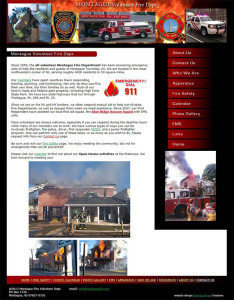Business owners deal with spam. Our inboxes bulge, our email addresses are spoofed by spammers and sold on mailing lists tagging us as legitimate email, so we get even more spam.
Many website owners use an email for their domain (info@yourdomain.com) and have it forwarded to a different email account from any of these: Outlook.com, Gmail, Verizon, EarthLink, Yahoo and more. The advantage is one less email to maintain each day.
Until lately it has been an easy configuration. Enter spammers. Spamming uses web hostings’ servers, thus affecting all website owners as spammers maliciously use bandwidth. Recently WordPress blogss were under attack to such extremes there was an urgency plea to update WordPress software and change your user name and password to something other than “admin” and “password”. This particular combination seems to have been so rampant spammers trolled blogs finding those with easy combinations and began to wreak havoc.
With so much spamming going on some webmail clients began to block anything being forwarded from a domain into their webmail, i.e. Yahoo and Verizon in the forefront. These two are smaller players in webmail compared to Gmail and Hotmail/Outlook.com, each which have enormous resources behind them, which seemed to equate to being less stringent in blocking any forwards, thus their action.
The first word from Yahoo was they would begin to allow the emails through, but no exact time table. I began seeing the email pour in five days later; then stopped, again and finally I gave up on Yahoo. With Hotmail/Outlook and Gmail happily reconnecting me with all forwarded email it was an easy choice.
Why does this happen? Since the forwarded email is passed straight through your domain on a forward it bypasses any spam filtering your web host may have, despite whether you enable it or not. When the clogging begins Yahoo “throttles” email – like stacking airplanes in sky, within no timetable on hand. These blocks (aka blacklisted emails) can be lifted eventually, but Verizon may take up to 3 months to sort it out. For business owners a few days is acceptable, but indefinite is not.
What to do? You can enable the spam-filter on your host which is dependent upon a “score”. The problem is some spam email will still get through, and some legitimate email will tagged as spam, not be sent. The tradeoff is no matter what you set the spam threshold to all you can really specify is whether you want to receive less legitimate email or more spam email. Under this solution, either your forwarded email would be missing valid email, or you’d be so permissive that the forward would eventually be blocked again.
- The best scenario is to download email by connecting to the server into such as Thunderbird, Microsoft Outlook, or Mail.app within Mac OSX. You will receive all your email–spam, too, but you won’t lose legitimate email. Outlook lets you “block senders” allowing you to tag repeat offenders.
- The easy fix: forward to Gmail or Hotmail.
- The simplest yet: put your destination email (Verizon, Yahoo, etc.) as the primary email on your website. While you lose the branding of your domain name in your email it removes any future forward issues. Yahoo and Verizon don’t send out emails notifying us they’ve made a change – you just stop receiving your email.


